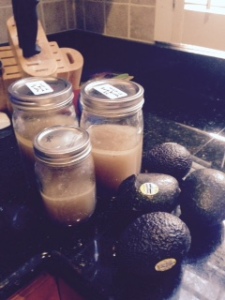“True health is not found in the medicine cabinet or at the end of my scope at Georgetown. It’s found in the little things. I encourage you to embrace this concept of do-it-yourself medicine.” — Robynne Chutkan, M.D., FASGE
“All disease is born in the gut.” — Hippocrates
I spent much of Friday whining to myself about how difficult the Paleo AIP diet is and wondering if it was time to throw in the towel. Yes, I have seen some improvements, but am I feeling incredible yet? No. (Yes, I know, healing a compromised gut and an over-excited immune system takes more than three weeks, but I am just being honest — that was where my head-space was). Furthermore, I find not eating packaged anything quite a hassle. Therefore, the timing of a lecture I heard by integrative gastroenterologist, Dr. Robynne Chutkan, could not have been better timed.
Chutkan spoke about the integral role that the gut plays in mediating all disease, but especially autoimmune disorders (for an excellent primer in this, see Dr. Sarah Ballantyne’s article). I had a good understanding of this after reading “The Paleo Approach” cover to cover, but it was news to me that how we come into the world and our earliest days can either set us up for a lifetime of gut health or potential trouble, according to Chutkan. She stressed that unnecessary c-section births and western culture’s reliance on infant formula are extremely deleterious to gut health. Passing through a vagina on our way into the planet apparently is very advantageous; in her book, Gutbliss, Chutkan cites a study that shows that babies born vaginally have guts primarily colonized by good bacteria, whereas c-section babies (like my daughter and Chutkan’s daughter, incidentally, born via c-section for the same exact reason) have guts primarily colonized by more common, “bad” hospital bacteria.
After a very, very rough start with breastfeeding, where my daughter’s pediatrician and my OB both encouraged me to stop nursing, I am still breastfeeding my toddler with no plans to wean her. Chutkan warmed my heart by loudly championing breastfeeding to build gut health in children for a lifetime. She acknowledged that a small percentage of women actually can’t breastfeed, but that does not account for the abysmal rates of breastfeeding in the United States. “This idea that [formula feeding] is fine, and it’s equivalent, and that formula is as ok as breast milk is incorrect,” Chutkan said, adding that the third ingredient in breast milk, human milk oligosaccharides, is non-digestible and is there solely to nourish the baby’s gut.
All of this matters greatly because scientific research is proving that once the microbiome is disrupted, it’s very hard to get it all back, so starting strong is important. For example, Chutkan cited a statistic that a five-day course of a broad-spectrum antibiotic wipes out about one-third of the microbiome and that most of those don’t come back. Good bacteria is especially vulnerable to probiotics, and it is especially hard for kids to repopulate their guts, she said. Futhermore, the evidence pointing to a relationship between gut health and overall health is strong and getting stronger: Chutkan cited a study that said the biggest factor that determined whether people with Crohn’s Disease in their families ever manifest the disease was repeated pediatric antibiotic use.
Chutkan also emphasized the following to maintain gut health:
1. DO be judicious about antibiotic use, especially in children. Chutkan reminded the audience that usually the doctor’s decision of whether to prescribe an antibiotic is not black and white, and cited a statistic that pediatricians prescribe antibiotics seven percent of the time when parents do not want their children to take one and 67 percent of the time that parents do. She encouraged the audience to always ask their doctor, “What would happen if I didn’t take this?” if antibiotics are on the table. (Note: Before you go ballistic, please note that the doctor said that like some c-sections, antibiotics are life-saving in the right circumstances. We just need to be careful about misusing them.)
2. DO NOT use hand sanitizers and antibacterial hand soaps.
3. DO let your kids play in the dirt. Seriously, it builds up the microbiome.
4. DO get a pet, which also builds the immune system.
5. DO take a high-quality, refrigerated probiotic, such as VSL#3, the only one FDA-approved to repopulate the gut.
6. DO work with a qualified health care provider to discuss the possibility of reducing or eliminating medications that disrupt the microbiome, such as proton pump inhibitors, antibiotics, steroids, and hormonal contraceptives (see Chutkan’s and Ballantyne’s books for a full discussion of this).
7. DO eat pre-biotic foods that nourish good gut bacteria. All vegetables help, but those containing indigestible plant fiber such as leeks, asparagus, Jerusalem artichokes, bananas, and green leafy veggies are the most beneficial.
8. DO spend money on high-quality, natural meat raised without antibiotics, since meat is a huge source of antibiotic intake.
All of these points made me feel really good about sticking with the Paleo AIP diet, since Ballantyne emphasizes all of the points that Dr. Chutkan made. I actually raised my hand and said that I was a good example of what not to do to a microbiome: I was born via c-section, formula-fed from day one, and I took years of oral and intravenous antibiotics to cure a stubborn Lyme Disease infection. I told Chutkan that I was following the Paleo Approach, and she said “It sounds like you’re on the right track.” Yay!

